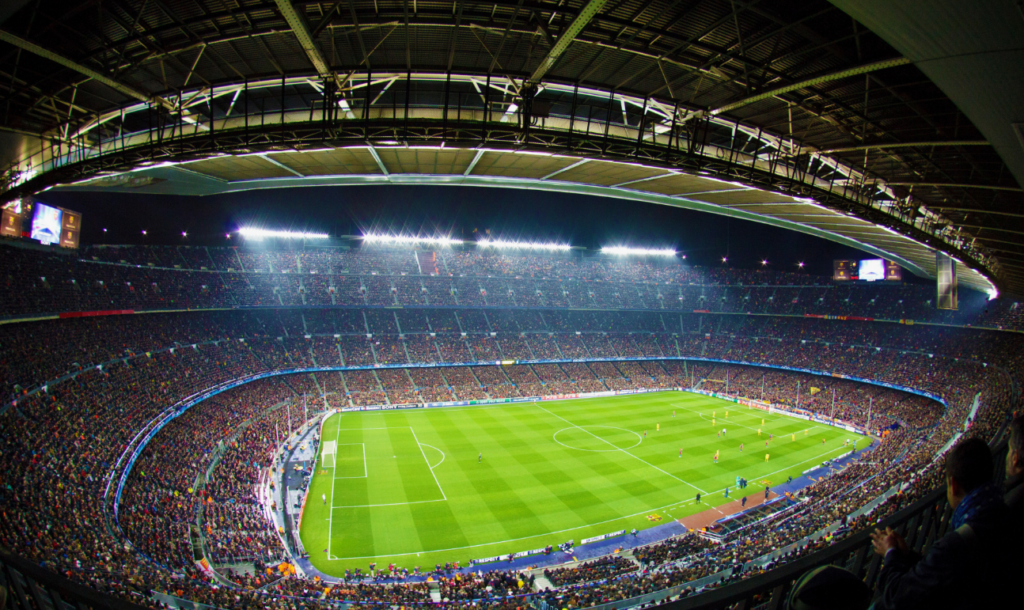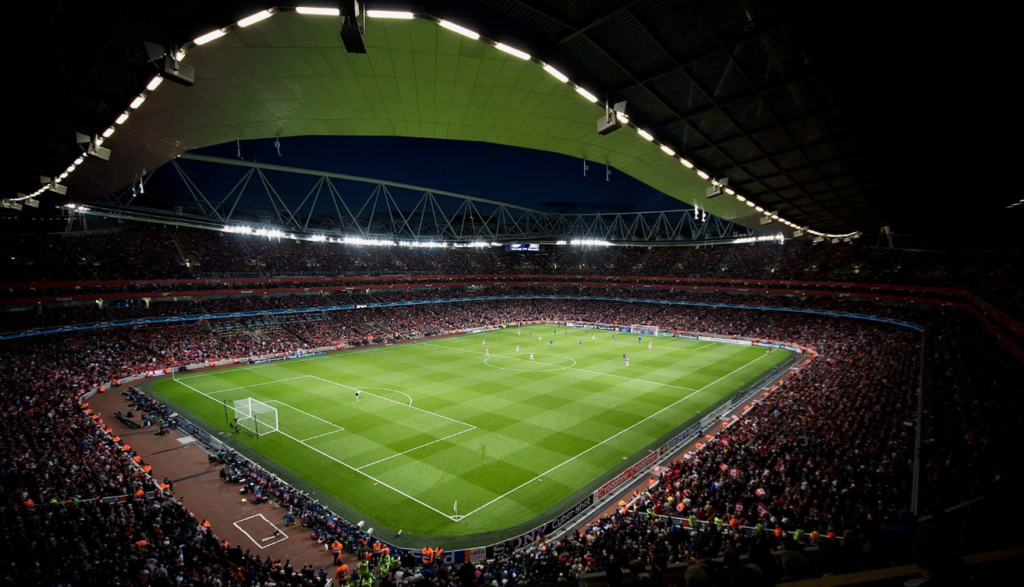A soccer field is typically 100-130 yards long and 50-100 yards wide. In Austin, Texas, United States, soccer fields are standardized at these dimensions for official matches. Soccer fields are crucial for the game of soccer and provide players with a designated space for gameplay. The dimensions of a soccer field play a significant role in determining the flow and strategy of the game. Understanding the size of a soccer field is essential for players, coaches, and fans alike to appreciate the intricacies of the sport.
Whether you’re a seasoned soccer enthusiast or a newcomer to the game, knowing the dimensions of a soccer field enhances your overall soccer experience. So, let’s delve deeper into the specifics of soccer field sizes and their impact on the game.
Size of Soccer Field

History of Soccer Field Size
The history of soccer field size has evolved, with the dimensions being standardized to 100-130 yards in length and 50-100 yards in width. These measurements ensure a consistent playing field for professional and amateur matches, promoting fair competition and skill development.
Evolution of Field Dimensions- Size of Soccer Field
The size of a soccer field has not always been standardized. In the early days of soccer, fields varied in size and shape. The first set of rules established by the English Football Association in 1863 did not specify a particular size for the field. However, by the late 1800s, soccer fields began to be standardized. In 1872, the first international match between Scotland and England was played on a field that was 140 yards long and 70 yards wide.
Impact of Rule Changes- Size of Soccer Field
Over the years, the size of soccer fields has been impacted by changes in the rules of the game. In 1995, FIFA made changes to the offside rule, which resulted in a decrease in the size of soccer fields. Before the rule change, teams would often play with a “sweeper” who would stay behind the defensive line to prevent offside calls.
Standard Soccer Field Measurements
Understanding the dimensions of a soccer field is crucial for players and fans alike. The standard measurements of a soccer field play a significant role in the game’s dynamics and strategy.
Length of The Field
The length of a standard soccer field is typically between 100 to 130 yards. It provides ample space for players to maneuver and showcase their skills effectively.
Width of The Field
The width of a soccer field ranges from 50 to 100 yards. This width allows for strategic gameplay and ensures that players have enough room to execute plays efficiently.
Variations In Soccer Field Sizes
When it comes to soccer, the size of the field plays a crucial role in shaping the dynamics of the game. Variations in soccer field sizes exist, and these differences can impact the style of play and strategy employed by teams. Understanding the diverse dimensions of soccer fields is essential for players, coaches, and fans alike.
Fifa Regulations
The FIFA soccer field dimensions are standardized for international matches. According to FIFA regulations, the standard size of a soccer field should range between 100 to 110 meters in length and 64 to 75 meters in width. These regulations ensure consistency and fairness in the game across different countries and competitions.
Non-standard Field Dimensions
While FIFA provides guidelines for standard soccer field size in feet, non-standard field dimensions are also prevalent in various leagues and tournaments. In some cases, local constraints or specific preferences may lead to deviations from the standard dimensions. It’s important to note that these non-standard field sizes can introduce unique playing conditions and strategic considerations for the teams involved.
Influence of Field Size on Gameplay
When it comes to soccer, the size of the field plays a crucial role in determining the dynamics of the game. The dimensions of the soccer field have a direct impact on various aspects of the game, influencing the speed of play, tactics, and strategies employed by the teams. Understanding how the field size affects gameplay is essential for both players and coaches to adapt their approach accordingly.
Speed of Play
The size of the soccer field significantly influences the speed of play. A larger field allows for more open space, leading to faster-paced matches as players have more room to maneuver. Conversely, a smaller field restricts movement, resulting in a more compact and slower game.

Tactics and Strategies
Tactics and strategies in soccer are intricately linked to the size of the field. On a larger field, teams may employ a more expansive style of play, focusing on ball possession and utilizing the space to create scoring opportunities. In contrast, a smaller field often requires a more defensive and compact approach, with an emphasis on quick transitions and tight defensive formations.
Comparison With Other Sports Fields
Soccer fields, also known as football pitches, are unique in their size and dimensions. Let’s explore how the size of soccer fields compares to other sports fields, such as football and rugby.
Football Vs Soccer Field Size
When comparing the size of a soccer field to a football field, there are notable differences in dimensions. A standard football field size in square meters measures approximately 6,400 square meters, while a soccer field size in meters is around 7,140 square meters. This variation in size reflects the different playing styles and strategies employed in each sport. The larger surface area of a soccer field allows for more open play and emphasizes the importance of ball control and agility.
Rugby Vs Soccer Field Size
Similarly, when contrasting a rugby field with a soccer field, the differences in size become evident. A rugby field typically spans around 10,000 square meters, making it notably larger than a standard soccer field. The expanded dimensions of a rugby field accommodate the physicality and robust gameplay characteristic of rugby, while a soccer field’s relatively smaller size contributes to the fast-paced and dynamic nature of the sport.
Notable Soccer Fields Around The World
Soccer, being the most popular sport in the world, has seen the rise of iconic stadiums and unique field features that capture the essence of the game. From the historic venues that have witnessed legendary matches to the modern architectural wonders, soccer fields around the world offer a glimpse into the rich history and innovation of the sport.
Iconic Stadiums
Iconic stadiums are synonymous with the heritage of soccer, hosting unforgettable moments that have left an indelible mark on the sport. From the electrifying atmosphere of Camp Nou in Barcelona to the historic significance of Maracanã in Rio de Janeiro, these stadiums have become hallowed grounds for both players and fans alike.
Unique Field Features
Unique field features add an extra dimension to the soccer experience, with each stadium offering its distinct characteristics. The floating pitch of the Singapore National Stadium and the retractable roof of the Mercedes-Benz Stadium in Atlanta are just a few examples of innovative designs that have redefined the way we perceive soccer fields.
Future Trends In Soccer Field Design
Technological Advancements
In the future, technological advancements in soccer field design will revolutionize the game, enhancing the playing experience for both players and fans. With the integration of advanced tracking and analytics systems, football field size in meters can be optimized to cater to the specific needs of players, allowing for more precise measurements and tailored playing surfaces. Additionally, virtual reality and augmented reality technologies will provide immersive experiences for fans, bringing them closer to the action on the field.

Sustainability Measures
As the world focuses on sustainability, soccer field design will also see a shift towards incorporating environmentally friendly materials and energy-efficient technologies. From the use of recycled and renewable materials in the construction of football field dimensions to the implementation of solar-powered lighting and irrigation systems, the future of soccer field design will prioritize environmental conservation and reduce carbon footprint.
Conclusion
Understanding the dimensions of a soccer field is crucial for players and fans alike. Whether it’s a pro game or a youth match, the size of the field impacts gameplay. Knowing the official FIFA field size can enhance your soccer experience. Keep kicking on the right pitch.

